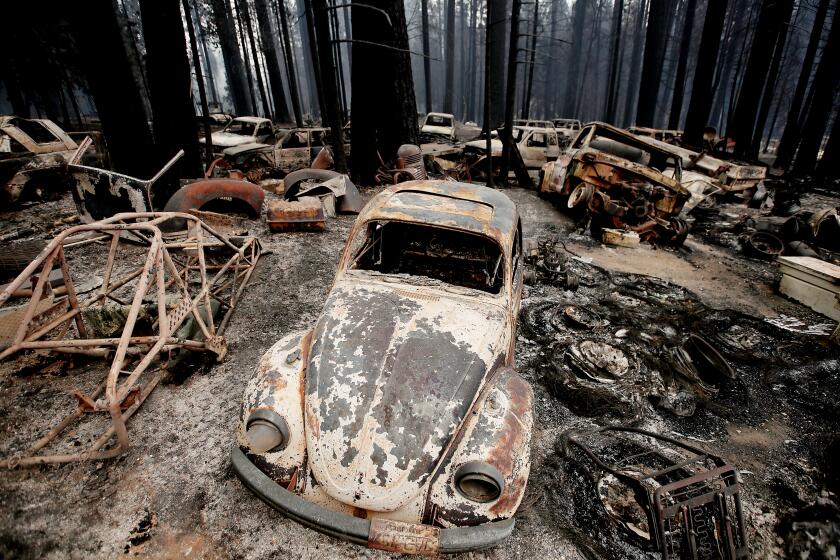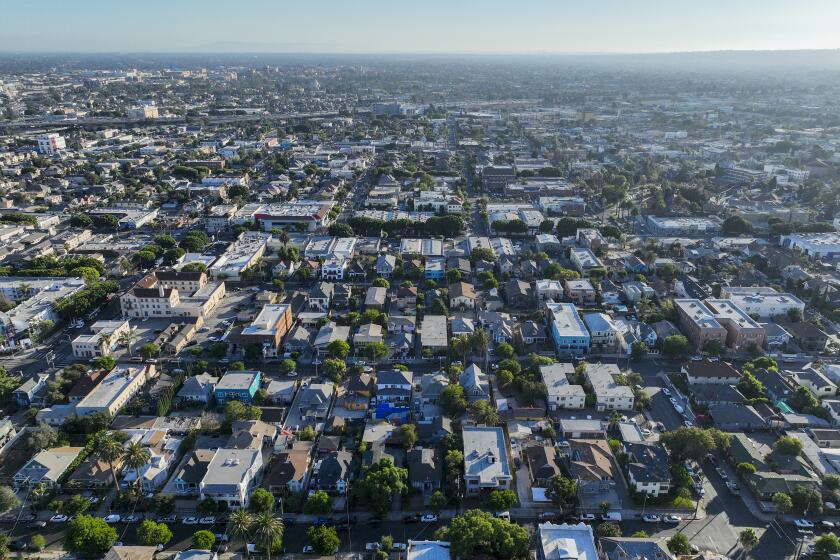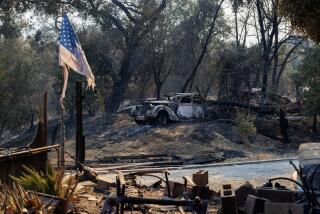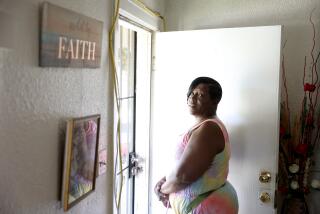Editorial: Climate change is making California more expensive. Home insurance is the latest bellwether
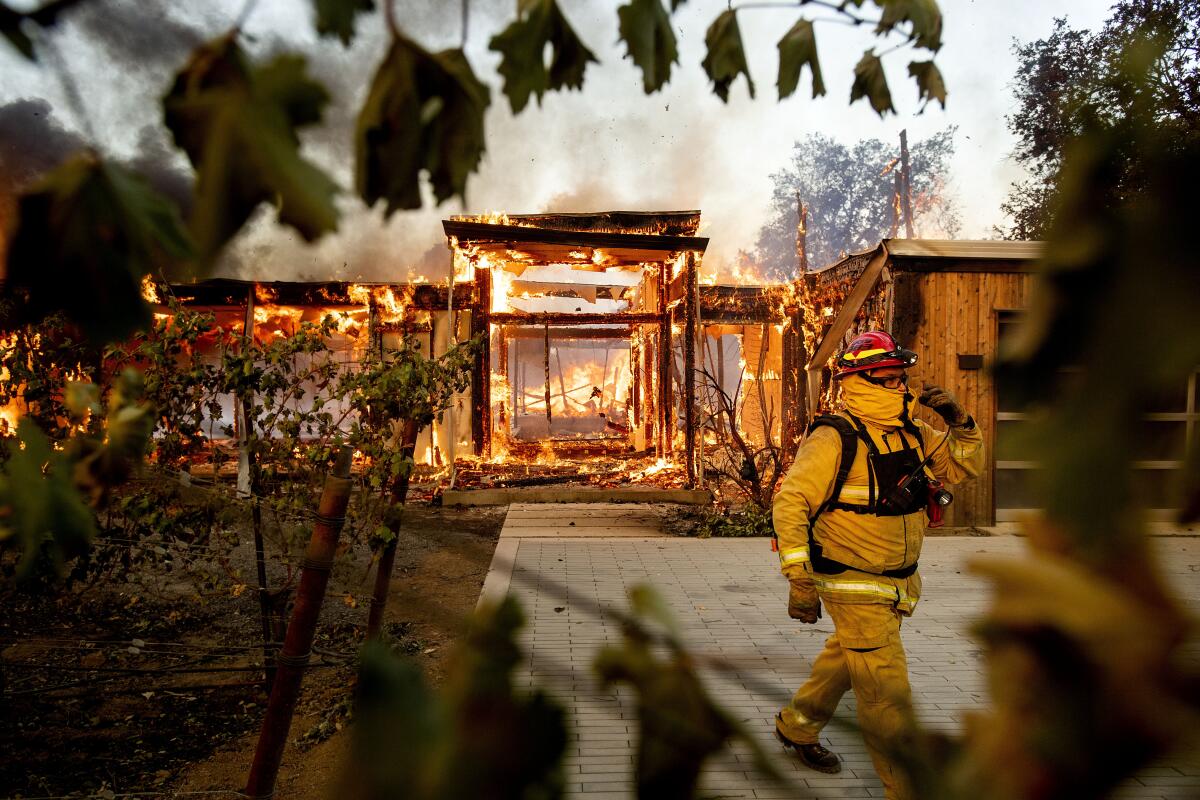
It’s bad news that California’s largest home insurance provider, State Farm, decided it’s too risky and expensive to sell new policies in the state. It’s even worse news that State Farm simply publicized what other insurance companies have been doing quietly for several years by refusing to renew policies and pulling out of communities at risk for wildfires.
While there are still more than 100 insurers writing new policies for property owners in the state, State Farm makes up 21% of the market. The company’s decision is worrisome because it shows the continued instability in the market for homeowners insurance, which is essential for people to get a mortgage and to protect their assets. It’s another sign that climate change is driving up the already high cost of living in California and lawmakers need to be far more aggressive in building safer communities.
In a statement, State Farm said its decision was influenced by the increased construction costs of rebuilding in California, the growing risk of catastrophes such as wildfires and, as a result, the rising cost of reinsurance (essentially insurance for insurance companies). The company said it had to curtail new policies in order to “improve the company’s financial strength.”
Of course, more people are worried about climate change given the escalating wildfires, heat waves and other climate disasters. But you wouldn’t know it from our government’s flagging response.
The insurance industry argues that California has become a much riskier and expensive state to operate in, but insurers haven’t been allowed to raise rates enough to match the new reality. The state’s elected insurance commissioner, Ricardo Lara, approves rate hikes, a process that can take six months or longer.
In other states that have suffered climate-fueled weather disasters, such as Florida and Texas, home insurance rates have increased more steeply than in California.
Lara’s aides said they’ve focused on the long game with policies that reduce fire risks at individual properties and in communities and will lower payout costs for insurers. Starting last year, insurance companies are required to offer discounts to property owners who reduce fire risks on their property by, for example, clearing combustible vegetation or installing fire-resistant roofs.
Those are smart efforts to make existing areas safer. But it’s inevitable and necessary that homeowners insurance rates accurately reflect the risk of living in areas prone to wildfires. That’s painful, but it sends an important price signal, not just to property owners but to elected leaders who set the policies that dictate how and where communities grow.
New legislation in Sacramento encourages urban and suburban housing while discouraging exurban sprawl that paves over wilderness and invites fires and floods.
For decades, California’s coastal and urban areas have made it hard to build enough housing for the state’s population, so developers and residents have flocked to cheaper land near and in the foothills, forests and grasslands that are prone to burn. Half of the buildings destroyed by wildfire in California over the last 30 years have been in what officials call the wildland-urban interface, where homes abut untouched natural areas.
Now, California leaders and property owners have the extraordinarily difficult and pricey task of retrofitting those homes and communities to help them withstand increasingly intense wildfires. (Many of these communities are also dealing with the effects of extreme weather in the form of heavy snow, flooding, heat waves and drought.) State and local officials and residents also have to manage the rising costs of insuring property owners and rebuilding after disasters.
But, California also has to stop making the same poor choices that put so many people in harm’s way. This year, lawmakers began considering Assembly Bill 68, which would make it faster and easier to build new housing within existing communities, near jobs, schools and shopping centers. Local governments could only allow new construction outside already developed areas if they demonstrate there is no other way to meet housing targets.
This is the kind of major change that California leaders need to embrace to manage the effects of climate change. It makes no sense to keep building homes in high fire-risk areas when future residents may not be able to get or afford insurance. Because of its complexity and significance, AB 68 was put on pause and will return for consideration in January.
California is not unique in having to deal with an onslaught of natural disasters. We’re seeing more climate-change-fueled extreme weather events across the country, along with serious flooding, tornado damage and coastal erosion. But California leaders are unique in their willingness to confront climate change head on, with laws designed to cut greenhouse gas emissions and help communities adapt to a warming planet. Still, the decision by State Farm to stop issuing new home insurance policies should be a wake-up call — if lawmakers don’t act, the private market will end up doing it for them.
More to Read
A cure for the common opinion
Get thought-provoking perspectives with our weekly newsletter.
You may occasionally receive promotional content from the Los Angeles Times.
